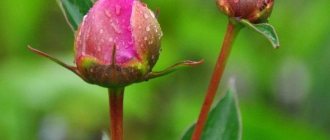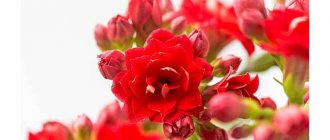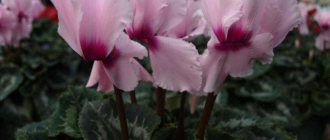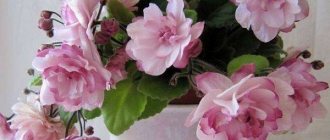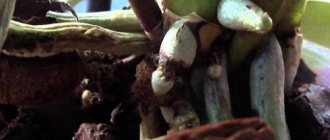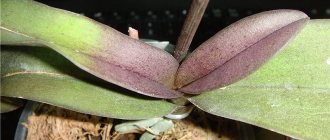No matter how well you care for the fruit trees and berry bushes in your garden, they are still susceptible to diseases and pest attacks.
Dear readers!
For you, we have created communities on social networks in which useful articles and interesting ideas are published several times a day! Subscribe and receive useful content in a convenient format! However, it is necessary to protect your fruit trees and shrubs if you do not want to be left without fruits and berries.
In today's article we will talk about what diseases the garden is susceptible to, how to protect fruit trees and shrubs, as well as what preventive measures to take.
Frequent diseases of fruit tree leaves
Leaves of fruit trees and shrubs are most often affected. This is where diseases manifest themselves most strongly.
The most common leaf diseases of fruit trees are powdery mildew, scab, milky shine, white spot, rust, bacterial canker (especially pronounced on cherries), leaf curl, moniliosis (manifests itself, among other things, as drying out of stone fruit leaves) and etc.
Plant diseases. Signs of defeat
With fusarium, the vascular system (fusarium wilt) and plant tissues (rot of roots, fruits and seeds) are affected. With fusarium wilts, damage and death of plants occur due to a sharp disruption of vital functions due to blockage of blood vessels by the mycelium of the fungus and the release of toxic substances. Affected plants exhibit poor flowering, yellowing and falling leaves, darkened, underdeveloped roots, and general wilting. Dark vessels are visible on the cut of the stem and leaves. At temperatures below +16°C, diseased plants die quickly.
Fusarium head blight. MUExtension417
On the bulbs, more often at the bottom, reddish-brown spots appear pressed inward (therefore, fusarium in bulbs is often called red rot), which, with high humidity, become covered with a pinkish-white coating. During storage, the disease quickly progresses and the bulbs rot, being a serious source of infection.
Fusarium wilts are especially dangerous for all bulbous plants, neoregelia, roses, chrysanthemums, echmea, anthurium, gerbera, cyclamen, impatiens, zygocactus and other articulated cacti.
Types of fruit tree diseases with photos and treatment methods
Diseases of fruit trees and berry bushes can be divided into several groups: bacterial, viral, fungal, infectious, cancerous, necrotic. In advanced cases, a fruit tree or shrub may have several different diseases at once.
Below are the most common diseases with descriptions, treatment and preventive measures.
Bacterial diseases
Another name is bacteriosis.
Pathogenic bacteria penetrate the tissues of the fruit tree through wounds. Specimens weakened as a result of improper care are also susceptible to disease.
Bacterial burn
The disease can be identified by the black spots that cover the entire fruit tree: the branches are watery and the foliage is dry. The tree looks as if it has dried up.
When flowers become infected, they also darken and fall off.
What to do
Treat with copper sulfate or antibiotics (Trichodermin, Fitolavin). Infected branches are cut down and burned.
Prevention measures
Most often, the disease enters the garden with new seedlings. Therefore, carefully inspect the planting material. Carry out preventive spraying of the soil in tree trunk circles.
Bacterial cancer of seedlings
Pear and apple trees are most susceptible to the disease. It appears in the form of bulbous growths on the root collar. The bark cracks and bacteria enter the cracks.
What to do
Remove infected seedlings from the garden.
Prevention measures
Carefully inspect the planting material when purchasing.
Viral diseases of fruit trees
Caused by cell-free viruses. Culture stops growing. First, the yield drops, then the plant stops bearing fruit altogether.
Mosaic
First a small spot of excellent color appears. Then the spots become more numerous. The leaf plates become as if covered with a mosaic. The leaves begin to curl, the bark and fruits crack.
What to do
Treatment with HOM and other similar drugs will help.
Prevention measures
Treatment in early spring and late autumn with copper-based fungicides.
Stoneiness of the pear fruit
Pear branches become covered with cracks and leaves turn yellow. The fruits are crushed. They lose their taste and become hard.
What to do
In case of severe infection (a large number of diseased fruits), the tree is dug up. The new one is planted in a different place.
Prevention measures
Compliance with sanitary rules, spraying.
Witch's broom (proliferation)
Apple and pear trees are susceptible to the disease; among shrubs, raspberries are often affected.
The disease manifests itself as the growth of a large number of thin shoots. Another sign is a reddish tint to the bark. Oppression occurs, fruiting decreases.
What to do
Destroy. Witch's broom has no cure.
Prevention measures
Spraying with copper or iron sulfate.
Fungal diseases of trees
Also called mycoses. The largest group of diseases.
Diseases of this group occur due to pathogenic fungi entering the tissues of trees and shrubs. Infection occurs through cracks, wounds, frost holes, punctures from insect bites.
Scab
Apple trees are mainly susceptible to the disease. At first it manifests itself in darkening and falling leaves.
A characteristic coating forms on the shoots and fruits.
What to do
Spray with Bordeaux mixture. Cut down damaged branches, pick fruits and burn them. Be sure to cover the cuts with garden varnish.
If the disease began during fruiting, use a saline solution (a glass of salt in a bucket of water).
Prevention measures
Treatment with Bordeaux mixture three times (in early spring, after flowering and late autumn).
Moniliosis (Fruit rot)
One of the most terrible diseases affecting stone fruits (cherries, plums, apricots). The leaves dry out as if they were burning. The fruits rot right on the branches.
Grows well in cold, damp weather.
ON A NOTE. Apple and pear trees are also susceptible to the disease.
What to do
Infected branches are cut down and burned. Treatment is carried out with copper sulfate, HOM or Fitosporin if the temperature is above +20.
Prevention measures
In spring and autumn, treat with a 3% solution of copper sulfate. Carry out sanitary pruning.
milky shine
The characteristic whitish coating on the leaves is a sure sign of this disease. Treatment cannot be delayed, as necrosis develops very quickly.
ON A NOTE. Milky shine usually occurs with other fungal diseases.
What to do
Treat with Abiga-Pik, Fitosporin or another fungicide.
Prevention measures
Early spring garden treatment. It is necessary to carry out sanitary measures: pruning, garbage removal.
Powdery mildew
One of the most common diseases. Identified by a characteristic white coating on the leaf blades.
What to do
Spraying with Abiga-Pik, Fitosporin or HOM.
Prevention measures
Follow the rules of care: regular pruning, garbage collection, fruit picking, whitewashing and spraying trees with fungicides for preventive purposes.
White spot
Most often it affects the pear tree. Appears as grayish-brown spots with a thick dark border on the leaves. As the disease develops, the tree may completely lose its foliage.
What to do
Spraying with Abiga-Pik, Fitosporin or HOM.
Prevention measures
Be sure to remove fallen leaves in which the pathogen overwinters.
Infectious diseases of trees in the garden
The infection enters the tree and shrub through microscopic damage. Infection also occurs through punctures left by pests.
ON A NOTE. In the specialized literature the name “virosis” may also appear.
Peach leaf curl
The main sign of infection is curling and reddening of the leaf blades. Growths also appear on the leaves. If left untreated, the peach can lose all its foliage as early as June.
What to do
Destruction of infected plant parts. Spraying with Abiga-pik, Skor, Kuproksat. Fertilizing with Nitroammophoska.
Prevention measures
Carry out 2 sprayings for preventive purposes:
- Efuzin 500 SC in the fall.
- Syllit in the spring.
Rust
Apple and pear trees are susceptible to the disease. Identified by bright orange spots on the leaf blades.
What to do
Tear off diseased leaves. Spray with fungicide.
Prevention measures
Do not plant juniper next to pears and apple trees. Carry out regular sanitation and pruning.
Fusarium
The name tracheomycosis wilt is also found.
Infection occurs from the roots, from where it spreads through the vessels throughout the plant. The leaves turn pale and wither. Then the drilling and drying processes occur. The plant dies.
What to do
Treat with one of the preparations: Alirin-B, Abiga-Pik, Baktofit, Vincit, etc.
Prevention measures
Destruction of diseased parts of trees and shrubs, treatment in spring and autumn.
Cancerous diseases of fruit trees and shrubs
These diseases are similar to similar human ones. They arise due to a malfunction in the genetic program and uncontrolled cell division of trees and shrubs. They can be provoked by previous diseases of another type (bacterial, fungal, etc.).
Black cancer
A disease of fruit trees that is difficult to cure. Caused by a fungus that overwinters in shoots, buds, etc. The tree is completely damaged.
Black cancer can be identified by burgundy spots on the leaf blades. They develop quickly and spread to fruits.
What to do
Clean the trunk and shoots from plaque. Treat the tree completely with Bordeaux mixture. It is imperative to remove and destroy the affected areas of the bark.
Prevention measures
Early spring lime treatment. Spraying with copper sulfate.
Bacterial stone carcinoma
Dying of buds and flowers, brown spots on the ovary. Infection also appears on the leaves in the form of watery spots that gradually turn brown. The leaf blades become thinner and the bark dies.
What to do
Spray with Champion and Miedzian.
Prevention measures
Carry out preventive spraying in spring and autumn.
Apple tree cancer
Cancer can be identified by the bark of the fruit tree, which appears in concentric ring cracks. In winter, red growths can be found in these places.
What to do
Cut out infected parts. In case of severe damage, saw off the branches. Cover with garden varnish.
Prevention measures
Spraying with copper-containing fungicides in the fall during the period of leaf fall.
How do necrosis diseases manifest themselves?
The essence of necrosis is that the tissue cells of fruit trees and shrubs are destroyed, which leads to the death of the plant crop.
Cytosporosis
Affects the bark. Caused by a fungus. At first it affects a small area of the cortex, but develops rapidly. The size of the affected areas grows, necrosis develops, and the tree dries out.
What to do
The damaged area is cleaned, followed by treatment with iron sulfate and clay putty.
Prevention measures
Preparing trees for winter: insulating trunks, whitewashing. Spray regularly with fungicides before and after winter.
Leaf necrosis
It is difficult to notice the disease before the leaves bloom. The leaf blades turn yellow, and then dry out and crumble.
What to do
Cut out all infected shoots. Treat with Fitosporin. In the fall, spray with iron sulfate.
Prevention measures
Sanitary pruning, thinning, spraying with fungicides.
Powdery mildew
Powdery mildew fungus infects mainly young parts of plants: petioles, leaves, shoots. Small spots in the form of a white coating (fungal mycelium) grow and can cover the plants in a continuous layer; the spores scatter in the form of a white powder similar to flour. The leaves curl and dry out, the buds do not bloom.
Measures to combat powdery mildew
remove and burn the affected plant, thin out dense plantings and reduce the dose of nitrogen fertilizers. On seedlings, spraying with garlic infusion (25–30 g per 1 liter of water) or mustard infusion (2 tablespoons of powder per 10 liters of warm water) helps. The drugs “Skor”, “Bravo”, “Topaz”, “Previkur” are used. Restrains the onslaught of the disease by spraying plants every 7–10 days with 1% Bordeaux mixture.
Preventive measures against powdery mildew:
- mixed planting of unstable crops, refusal of mono-plantings;
- timely removal of plant debris and wilted flowers;
- from the second half of summer, reduce the dose of nitrogen fertilizers; during an outbreak of powdery mildew activity (usually the end of June - beginning of July), it is better to feed the plants with phosphorus-potassium fertilizers;
- regular watering - leaf resistance decreases during drought or due to insufficient watering.
Risk group: phlox, delphiniums, peonies, chrysanthemums, geraniums.
black spot on rose
Tree pests
Parasitic insects cause no less damage to fruit and berry crops. Let's figure out how to deal with pests.
IMPORTANT! In addition to direct harm to the plant, insects are dangerous because they are carriers of various diseases.
Wasp
Not the most obvious pest. However, wasps cause damage to crops because they love to eat sweet fruits.
How to fight
We need to find and destroy the pest nest.
Prevention
Place wasp traps. Do not litter the area so that pests have nowhere to nest.
Weevil
A small bug with a long proboscis. The pest gnaws pedicels and pierces leaf blades, feeding on sap.
ON A NOTE. It mainly affects shrubs.
How to fight
Spray infected plants with Alatar, Fufanon-Nova.
Prevention
Treatment with ash infusion (3 kg per bucket of water), cleaning up fallen leaves in the fall.
Mite
A microscopic insect that lives on the underside of a leaf and feeds on its sap.
How to fight
Spray with ammonia solution (3 spoons per liter of water), Fufanon-Nova, Iskra.
Prevention
Early spring scalding of bushes with boiling water. Fungicide treatment.
Goldentail
A “furry” caterpillar eating leaves.
How to fight
Destroy pests by spraying with insecticides (Aktara, Inta-Vir).
Prevention
Destruction of nests and pupae of pests. Cleaning up fallen leaves.
codling moth
A gray butterfly blending into the bark. The pest feeds on fruit seeds.
How to fight
Placing traps for pests. Spraying against pests with insecticides Aliot, Avant, Ivanhoe, BioKill, etc.
The pest also cannot tolerate the aroma of tomato tops.
Prevention
Removing old bark, cleaning up debris.
Medyanitsa
Pale green pest. Drinks plant juice through punctures. The presence of the pest can be determined by honeydew on the leaves and shoots.
How to fight
Actara, Aliot, Carbocin, etc. are effective.
Prevention
Spring fumigation of trees (pear, apple, quince) with tobacco smoke. Spraying with soap solution.
Glassware
Black and orange butterfly with a long tail. The pest lays larvae that live inside the branches or shoots of bushes. An infected plant may die.
How to fight
Use the drugs Inta-Vir, Fury.
Prevention
Infected shoots are cut down at the root to the uninfected part. The rest is burned.
Aphid
A small insect, black or green. The pest settles in the axils of the leaves and on the reverse side of the leaf blade.
How to fight
Aphids must be poisoned with insecticides. The most effective against the pest are Aktara and Karbofos from store-bought preparations and ammonia solution from folk remedies.
Insecticides are diluted according to the recipe, and to prepare a working solution you need to mix half a bottle of ammonia with 6 liters of water.
Prevention
Destroy anthills, since it is ants that often breed aphids. Installing catch belts also helps.
Gall aphid
The pest itself is difficult to notice, but it is easy to see swollen red blisters on the leaves. An infected plant loses its leaves and stops bearing fruit.
How to fight
Removing diseased shoots. Spraying with Aktara and ammonia solution.
Prevention
Planting garlic, alyssum, and marigolds nearby. Sanitary pruning of currants.
Ognevka
The pest eats the berries. Its presence can be determined by leaves and shoots entwined with cobwebs.
How to fight
Use insecticides Iskra, Fufanon-Nova.
Prevention
Mulching tree trunk circles. Preventive spraying with Lepidocide.
Fusarium, or fusarium wilt
The fungus, the causative agent of fusarium, penetrates through the roots into the plant and clogs the vascular system. Wilting often occurs during the budding and flowering phases. In the 1st stage of development, the leaves turn slightly yellow, then turn brown, curl and droop. Elongated brown spots appear on the stems, and dark stripes appear at the root collar. In diseased plants, a pink coating of sporulation of the fungus forms in the lower part of the stem or on all parts with high humidity and elevated temperature.
Measures for the prevention and control of fusarium
disinfection of planting material and soil before sowing. Water the seedlings at the roots before planting in open ground with a solution of Fundazol (0.2%). Removing diseased plants along with roots and a clod of earth and sprinkling the surface of the soil with quicklime.
Risk group: lilies, irises, chrysanthemums.
septorio peonies
Preventive measures in the fight against diseases and pests
The best solution would be to prevent the appearance of diseases and pests.
In addition to all the preventive measures listed above, there are simple methods with which you can protect your trees and shrubs.
- Sanitary pruning. Filing away diseased, frost-damaged and old branches and shoots deprives fungal spores and insects of a place to overwinter and reproduce.
- Cleaning up debris and leaves in the tree trunk circle. The same goes for regular cleaning. You should not leave fallen leaves, broken branches and other debris under trees and bushes.
- Fertilizer application. Fertilizing not only stimulates the growth and development of plants, but also improves their immunity, which in the long term helps fruit trees and shrubs fight diseases and pests.
- Loosening the soil after watering. This is the most important agricultural technique that many people neglect. Loosening the soil under trees and shrubs improves the aeration of the root system and prevents the development of various rots.
- Preventive treatment carried out in spring and autumn destroys many pests and pathogenic microorganisms.
- Preparing for winter. Shrubs and trees must be prepared for cold weather. Frost holes in tree bark are a vulnerability that can expose trees to disease and pests.
IMPORTANT! Find out what cultural practices are needed for each type of tree and shrub in your garden.
Black cancer
Fungal disease of the bark of branches and trunks of apple, pear, apricot and other fruit crops. A brown spot first appears on the bark, its edges thicken. Then the bark in this place dies, cracks and peels off, exposing the wood. Dead bark and wood turn black, and black tubercles of fruiting fungus appear on them. Leaves and fruits are also affected.
The fungus overwinters in the affected bark. Its spores disperse and infect trees throughout the warm period of the year. Infection is favored by the presence of cracks and mechanical damage to the bark. Older and weakened trees that do not receive proper care are more often affected.
Control measures. First of all, pruning and burning of affected branches, uprooting and burning of trees that died from black cancer. Digging the soil, applying fertilizers, and timely watering promote the growth of trees and increase their resistance to disease. It is very important to protect trees from mechanical damage, as well as treat wounds by stripping diseased bark and wood to healthy tissue, followed by disinfecting the wounds with a solution of copper sulfate and sealing them with garden varnish.
Common mistakes
- The disease is ignored. Often a gardener notices that something is wrong with his plantings, but stubbornly ignores it, not wanting to deal with treatment. As a result, the harvest is much smaller.
- Treatment with too concentrated composition. This is the opposite situation when treatment against diseases and pests is carried out with too concentrated a chemical. The result is a chemical burn.
- Spraying during flowering. Most insecticides are destructive to beneficial insects (bees, bumblebees, etc.), so treatment against parasites must be carried out before or after flowering.
- Lack of preventive measures. Cleaning, pruning - all these are activities that will make your life much easier when fighting diseases and pests.
- Using inappropriate drugs. Different drugs are intended for different groups of diseases and pests. The effectiveness of treatment depends on the correct selection of funds.
- Processing errors. Here we can talk about non-compliance with the timing and frequency of spraying, and about holding the event in rainy or hot weather.
- Lack of fertilizing. Fertilizer application is a mandatory agrotechnical measure that helps improve the immunity of trees and, as a result, their resistance to diseases and pests.
- Fruits, including rotten ones, remain on the branches and shoots. Rotting fruits are a potential source of infection for the entire plant. Therefore, it is very important not to leave fruits on trees and shrubs.
- Infected branches and shoots remain in the garden. Everything you cut down must be burned to destroy a possible source of infection.
Spider mite
When attacked by spider mites, the leaves lighten and become covered with small yellow dots (from injections), then turn yellow and dry out, becoming covered with cobwebs.
Prevention and control measures for spider mites
Timely and sufficient nutrition of plants with fertilizers, ventilation and watering. Destruction of weeds around and inside greenhouses, greenhouses, beds. During the growing season, spraying with “Akarin”, “Bitoxibacillin”, “Fitoverm”. Chemicals: Actellik, Kemifos, Neoron, Apollo, Demitan.
hosta leaf damaged by slugs
Answers to frequently asked questions
Is it possible to cure a diseased tree or shrub?
Yes, if you attend to the issue of treatment in time, choose the right medications and carry out preventive work.
Is it possible to eat fruits from an infected tree and berries from a bush?
If they show signs of rot or other pest infestation, they should not be eaten.
What drugs are the most effective?
For the treatment of diseases, iron and copper sulfate, Bordeaux mixture and other copper-based preparations are best used. But they must be used in early spring or late autumn, when the trees “sleep”.
During the active growing season, it is better to use products such as Fitosporin and Abiga-PIK.
Of the insecticides, gardeners most often praise Aktara and Karbofos.
What is the most dangerous disease?
Any disease can be fatal if left untreated.
Is it possible to get rid of diseases and pests once and for all?
Unfortunately no. Even if you eliminate all parasites and destroy all diseases, it is not a fact that spores and insects will not fly to you from a neighboring area. Therefore, it is important to carry out preventive measures to protect the garden.
Mosaic/Ring spot
Photo from Wikimedia.org
| What crops does it affect? | How to recognize | How to fight |
| Raspberries, currants, garden strawberries | The leaves of the crop are covered with yellow spots, reminiscent of a mosaic. Sometimes the spots can be limited to veins, resembling a certain pattern or design that moves from the foliage to other parts of the plant. The infection may be asymptomatic or cause leaf deformation. The yield of the plant decreases and it may die. | Control measures There is no treatment for this virus. Severely affected plants will have to be removed along with the earthen clod and destroyed. Prevention Growing relatively resistant varieties purchased from a trusted seller. Timely treatment of plants with insecticides against pests as the main carriers of the disease. Removal of wild plant carriers. Timely fertilizing to maintain immunity in crops. |
Rust
| What crops does it affect? | How to recognize | How to fight |
| Pome and stone fruit trees, currants, gooseberries, raspberries | Brown-red or red-orange swellings appear on the leaves in the form of pads. The disease is caused by a rust fungus, the spores of which quickly spread throughout the tree, as a result of which the crop sheds its leaves ahead of schedule and bears fruit poorly. Fungal spores can enter the area from neighbors or even from a nearby forest. One of the host plants is juniper. | Control measures Treatment of plants with Agrolekar, Profi, Forecast and Bordeaux mixture (trees - according to the instructions for currants and gooseberries). Prevention Planting bushes with a dense crown along the fence or along the perimeter of the area. Growing relatively resistant varieties. |
- Plant rust - signs of the disease and ways to combat it
If the leaves of the plant are covered with spots with a touch of yellow, red, red (less often brown) shades, then most likely the crop has been affected by rust.
Gray rot
| What crops does it affect? | How to recognize | How to fight |
| Garden strawberries, grapes, raspberries, currants, gooseberries | Rot with a gray coating appears on the berries (less commonly, peduncles, stalks and leaves). The infected fruit retains its elasticity and shape, but loses its taste and aroma, then dries out and mummifies. At the same time, large watery gray-brown spots may appear on peduncles and leaves. | Control measures Treatment with drugs Skor, Profi, Chistoflor, Forecast (according to the instructions for grapes or garden strawberries), Claymore (for berry crops - according to the instructions for grapes). Prevention Growing relatively resistant varieties purchased from a trusted seller. Mulching the soil under crops with non-woven fabric or straw. Weed control and removal of plant residues. Scheduled spraying of plantings with Alirin-B (according to the instructions for garden strawberries), Sporobacterin (according to the instructions for garden strawberries and grapes). |
- Gray mold - signs of the disease and ways to combat it
How to understand that your plants are sick with gray rot and what can be done in this situation?
